peregrination :: Ireland 2003
Wednesday, 2 July 2003
Well, I had lots of plans for today, and only some of them came to fruition. Firstly, I had planned to have breakfast at a little cafe I found up the road in Lincoln Place (off Pearse Street). That worked, although the breakfast was less wonderful than I had hoped. I also discovered the Trinity College gym and its workings, so I’m ready for tomorrow. So, by the time I set out on my sight-seeing adventure, things were going according to plan, if not exactly to schedule.
I headed off, thinking I would go past City Hall to Christ Church Cathedral and Dublinia, stopping at an Internet Cafe on the way. The initiative was fine, except my map reading skills were not. I found an Internet Cafe OK, but by then I had already turned the wrong way and was walking away from where I wanted to go. Add to this that I am using my jacket as a purse/carry-bag and the day was bright and sunny and things were not going as smoothly as I had hoped. Anyway, I managed to detect my directional error before I got too far from civilisation, and turned back. As it was, by the time I got to City Hall, I was still there 30 mins before they opened! I filled in time trying to visit a shop that might sell Leprechauns, but they were not open, despite the very clear shop opening times on the door that said they should be. It was clear that my day was not going to go as planned! So, I headed off to Christ Church, which fortunately opened for business at approximately the moment I got there!
Christ Church Cathedral stands on the ruins of the first ever church in Dublin and ranks as the oldest Church in the city (Anglican, interestingly enough). A magnificent gothic cathedral it is too. Lots of pictures here, some not so good given the nature of the place and my camera.
These pictures all illustrate different elements of the Cathedral that captured my attention. They require some explanation, but they were fascinating in one way or another.
.jpg)
Picture artificially lightened
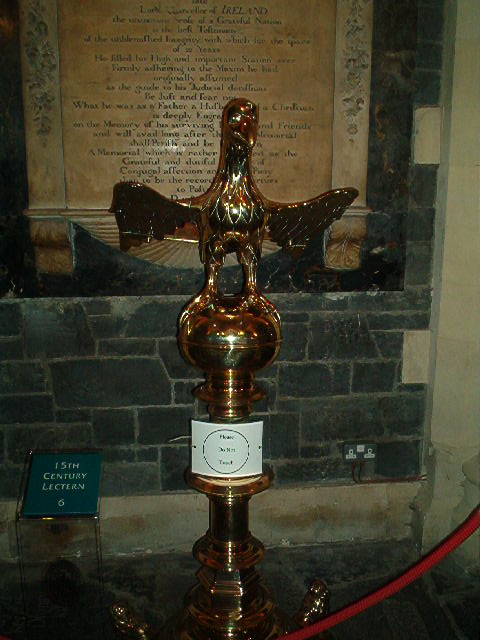
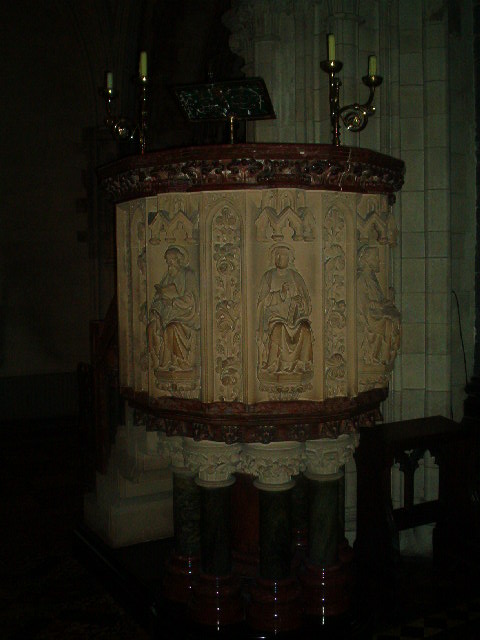
.jpg)
.jpg)
.jpg)
.jpg)
.jpg)
I thought I had seen all the cathedrals I needed when in England over ten years ago, and in some respects it is true, but I really enjoyed Christ Church Cathedral. Certainly one bonus was listening to a young man with a beautiful light tenor voice singing prayers in the choiry while I was there. Truly a sound to hear in a cathedral and truly a beautiful way of praying.
After the cathedral I was ready to visit Dublinia, a tourist attraction dedicated to the mediaeval elements of Dublin, but two elements came together for me to not do that: no cash – I walked out of my room with €20 and after breakfast, a coffee, donation at the church, etc., I was not flush with cash; and a group of tourists were milling in the foyer waiting to be guided through – I was interested in absorbing the history, not having it recited to me, so I left.
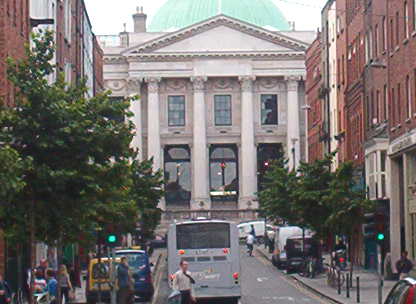
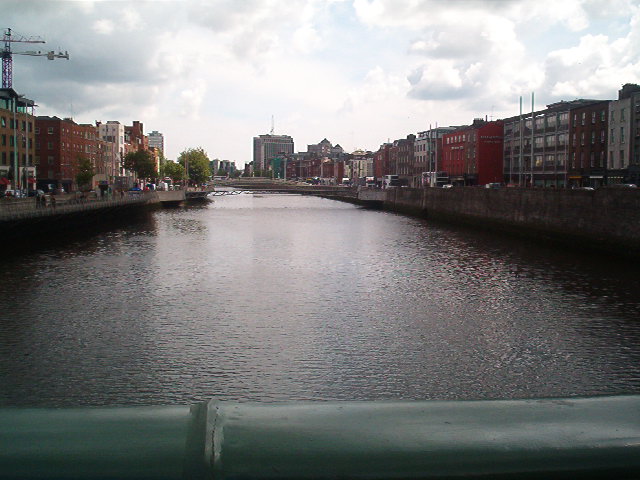
As I was walking to my next destination (the Jameson Whiskey distillery) I took some other photos of elements of Dublin that I find intriguing. Firstly, walking through a lesser thoroughfare behind a fruit and veg market (think Fyshwick markets), I noticed (again) that using horses and carts has not died in Dublin. Then I came across a row of ‘classic’ duplexes that so typifies the housing around Dublin (that I’ve seen), but I also photographed some of the house fronts as each is unique in its own way.
Off I strolled after my Guiness through the rest of the Temple Bar district, sort of soaking up the atmosphere and on to Grafton Street, the other major shopping district that had been pointed out on the bus tour. On the way, I took a couple of photos to try to capture the feeling of some of the city. The first, a look along Dame Street shows the rows of Georgian terraces that were constructed in Dublin during the Georgian period. Apparently a lot of medieval buildings were lost to this construction phase, and there are a LOT of Georgian buildings. The second photo shows the Pen House. Nothing particularly special about this place that I know of, but it shows some of the older, more interesting architecture that still exists in Dublin, and the poor condition that so much of it is in form all the pollution over all the years.
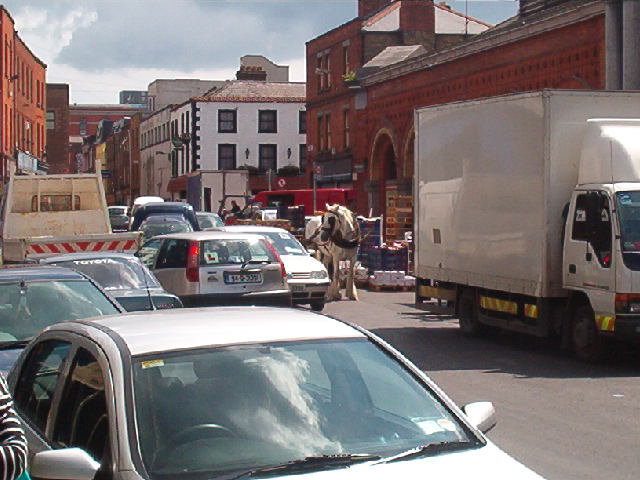
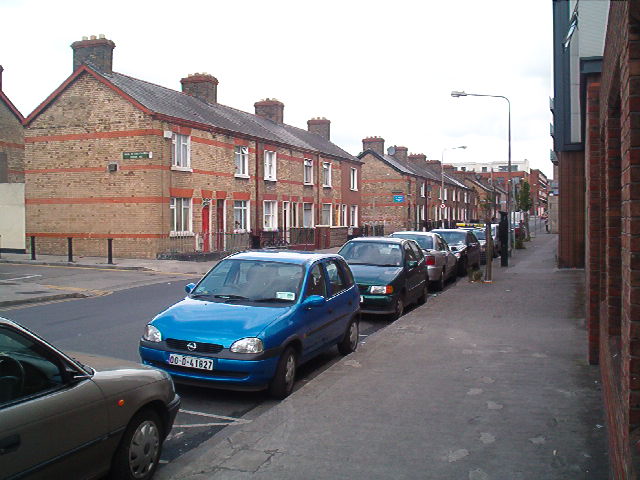
In Australia they’d be in huge demand for their location.
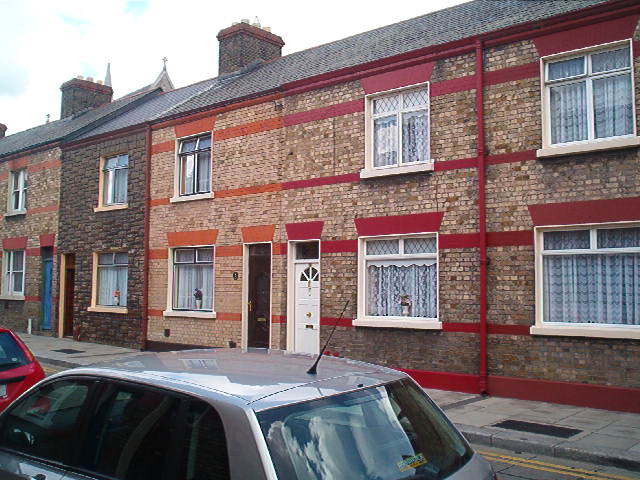
The Jameson’s distillery tour was interesting, but nothing to write home about, so I wont!. It was entertaining at the end when previoulsy selected volunteers (I did volunteer but wasn’t selected) were led through a whiskey tasting. Of course, they all chose Jameson’s whiskey as their favourite, but the process was interesting. I took the opportunity of photographing our very cooperative tour giude as she was in all respects a ‘typical’ Irish girl (and a very accomplished guide).
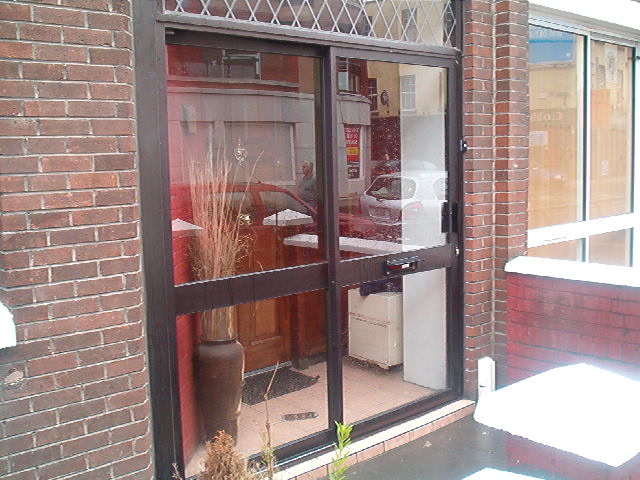
I also got to see what the difference in view about high-density housing is in Dublin. On one side of the street are what can only be ‘Housing Commission’ flats and on the other is a new set of townhouses. The similarities are probably more frightening than the differences.
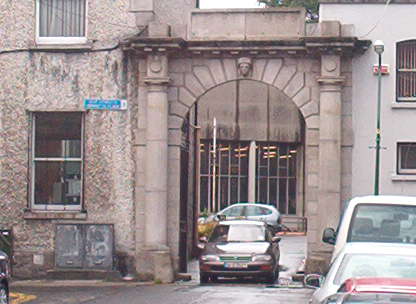
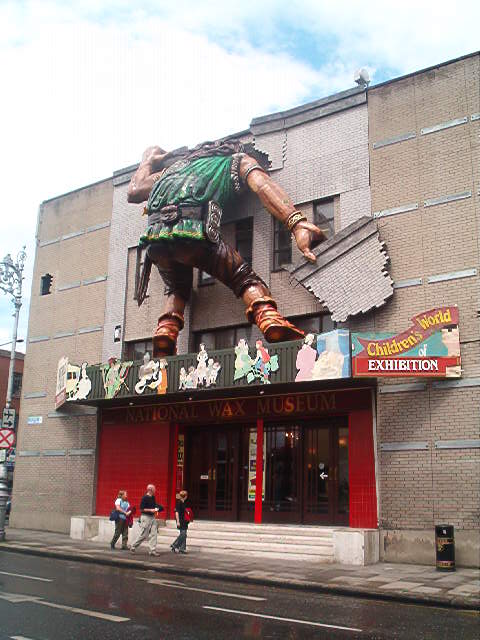
The other thing I saw while wandering along was more evidence that lots of Dublin is in quite poor repair. I had seen this while on the train into Dublin and haven’t yet worked out why it is so. There is supposed to be lots of prosperity in Ireland after its merger with the EU, but there is a lot of evidence that it is not all beer and skittles yet. The photo shows the sorts of things that you see as you walk around, gorgeous old buildings in (relatively) prime locations that are in disrepair and disuse.
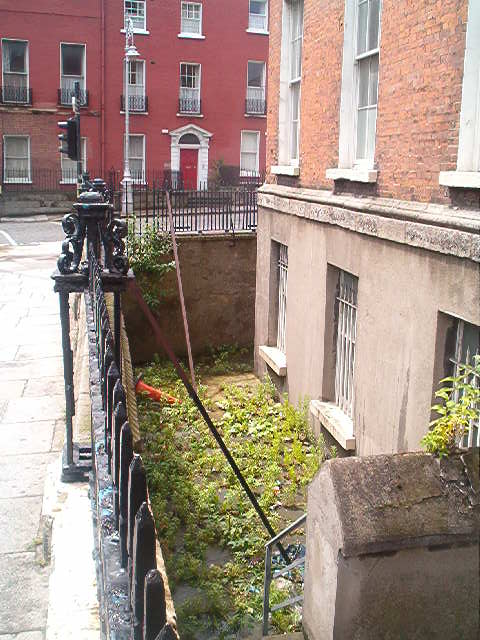
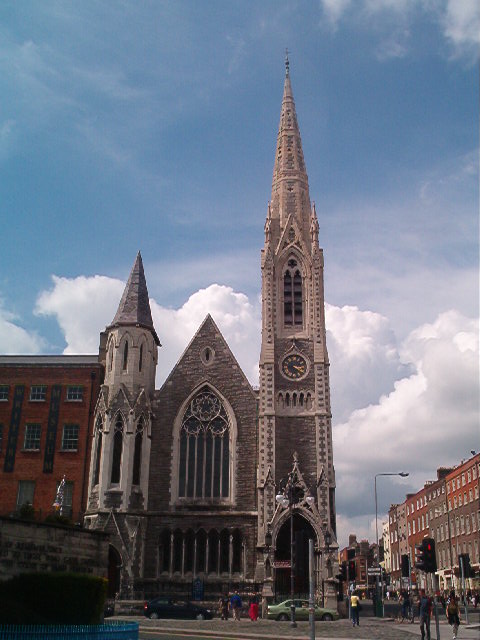
And then across the square from these two monuments to Ireland’s history, and the disused building in the other photo, is the Garden of Remembrance. This is a lovely memorial park dedicated to those who have fallen in various conflicts. It was beautiful sunny weather while I was there so I took a few photos (below), but I didn’t get to contemplate it for too long as there were three tour groups moving through it and several Dubliners having their lunch there. It is good to see the place being visited but hard to imagine any contemplative reflection taking place.
.jpg)
.jpg)
I did not get to overhear its significance
.jpg)
After the Garden of Remembrance the plan was to stop at Customs House, a huge and imposing piece of architecture on the banks of the River Liffey. But it had already been a long walking day so as I walked past a cinema that was showing The Matrix Reloaded in 5 minutes time, I opted for a quiet sit in the theatre to rest my aching feet ;-). Loved the movie again and the Irish seemed to react to it in the same way as Australian audiences – internationalisation through American cultural imperialism.
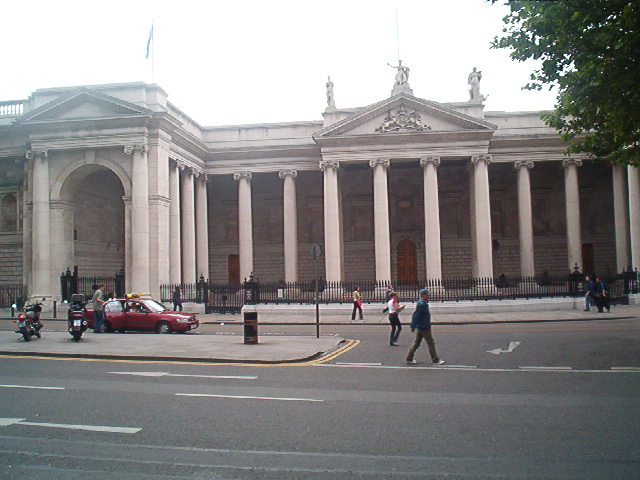
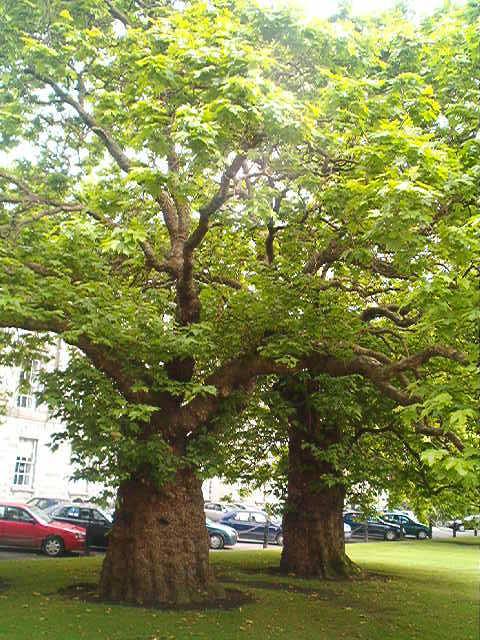
I finished the day with a pleasant dinner in a restaurant I found off Grafton Street and then composing (most of) this entry. Tomorrow (today now) it’s conference day – probably a much less interesting entry!

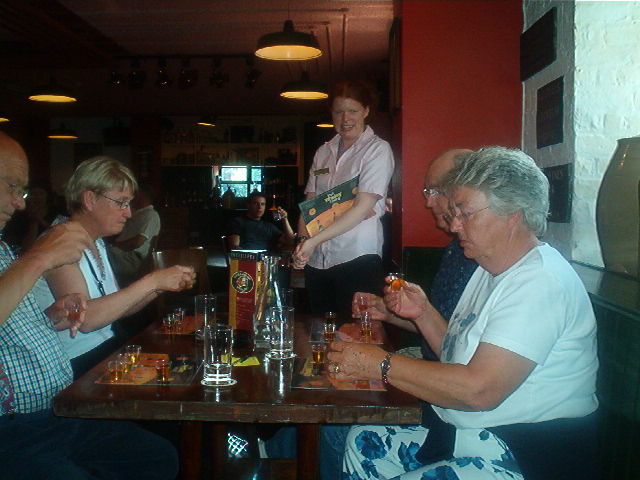
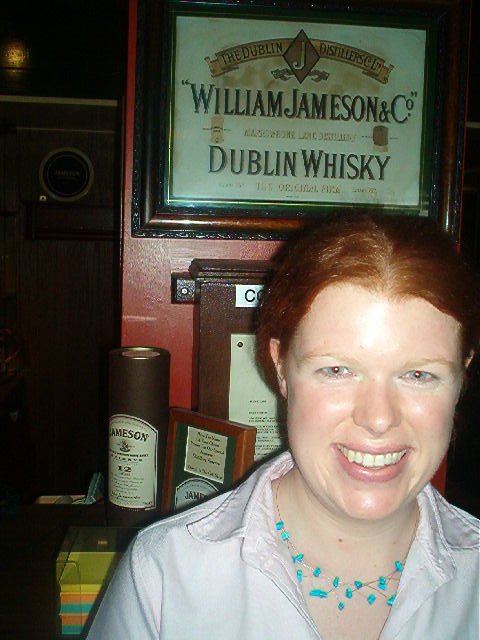
.jpg)
.jpg)